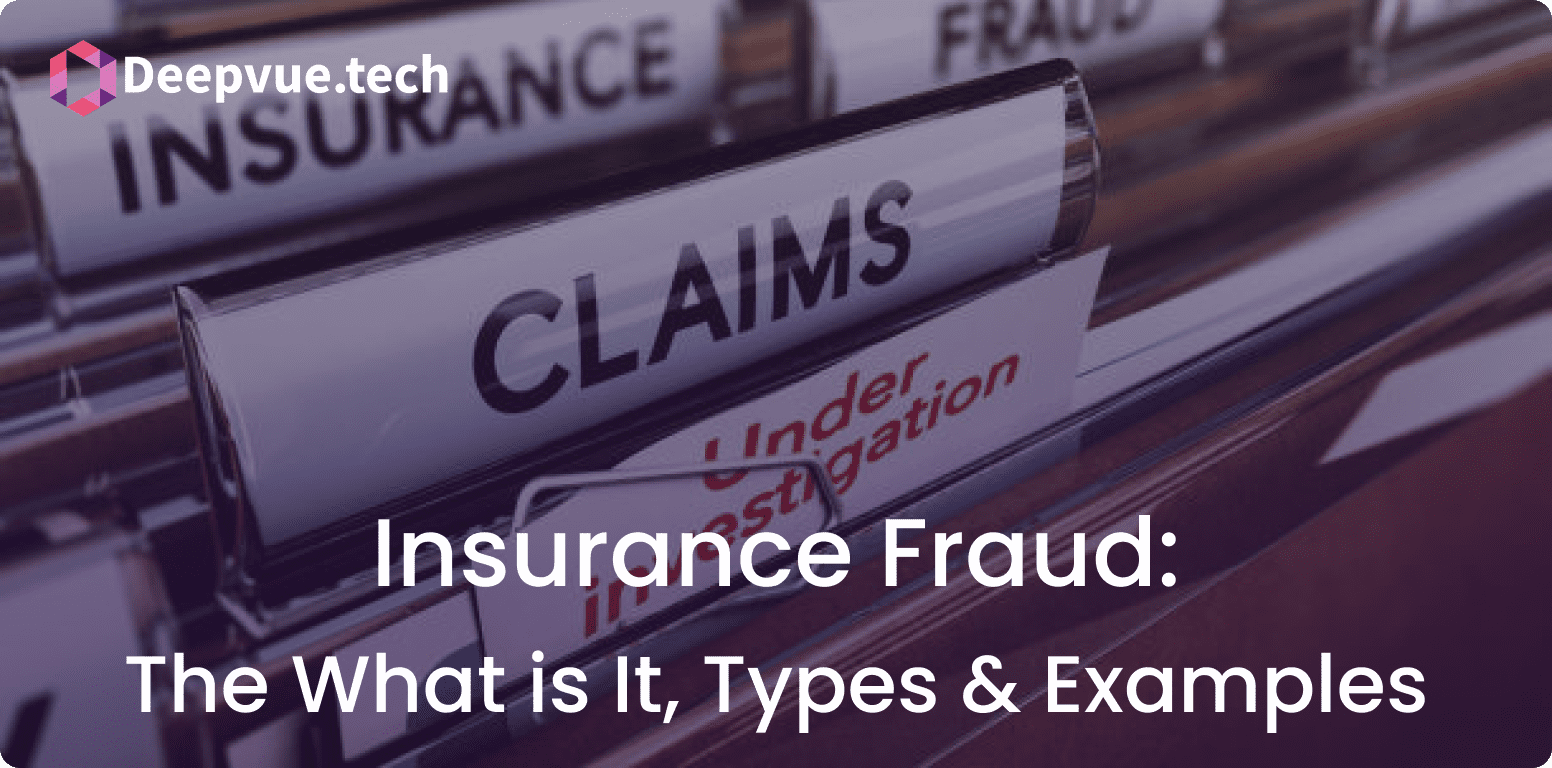Insurance fraud is a deceptive practice aimed at exploiting the insurance system for personal gain. This issue affects the integrity of the insurance industry and the trust of honest policyholders.
In this article, we will explore what insurance fraud is, the various types of insurance frauds, and some real-life examples to better understand these concepts.
What is Insurance Fraud?
Insurance fraud occurs when someone deliberately deceives an insurance company to receive an unauthorized benefit. This could involve providing false information during the application process, exaggerating claims, or staging accidents. Insurance fraud not only affects insurance companies but also leads to higher premiums for honest policyholders and reduces overall trust in the insurance system.
Insurance fraud can take many forms and can be committed by anyone involved in the insurance process, including policyholders, claimants, and even insurance agents or companies. Fraud can be opportunistic, where individuals take advantage of an opportunity to commit fraud, or organized, involving sophisticated schemes that are planned and executed by groups of people.
Types of Insurance Frauds
1. Application Fraud
Application fraud happens when individuals provide false information or hide relevant facts while applying for an insurance policy. This could include lying about health conditions, income, or other factors that would affect the policy’s terms and premiums.
For instance, a person might conceal a pre-existing medical condition to get a lower health insurance premium or might understate their income to qualify for a subsidized insurance plan.
2. Claims Fraud
Claims fraud involves policyholders filing false or exaggerated claims to receive insurance benefits. This could include inflating the extent of damages, reporting fake accidents, or submitting claims for injuries that never occurred.
For instance, someone staging a car accident to collect money for injuries and vehicle damage that did not actually happen. Another common form of claims fraud is “padding,” where the policyholder exaggerates the value of the claim.
3. Identity Theft
Identity theft in the insurance sector occurs when someone uses another person’s personal information to obtain insurance benefits. This could involve using stolen identities to file claims or apply for new policies fraudulently.
For example, a fraudster might use a stolen Govt ID number to apply for a life insurance policy and then file a false death claim. Identity theft can also be used to access someone else’s health insurance benefits, leading to unauthorized medical treatments and charges.
4. Premium Diversion
Premium diversion fraud happens when an insurance agent or broker takes premium payments from clients but does not forward them to the insurance company. Instead, the agent keeps the money for personal use, leaving the clients without coverage.
This type of fraud can be particularly damaging because policyholders may not realize they are uninsured until they need to file a claim. Premium diversion can also involve agents creating fake insurance policies and collecting premiums without ever intending to provide coverage.
5. Fake Policy Fraud
Fake policy fraud occurs when fraudsters create and sell bogus insurance policies. Unsuspecting customers believe they are purchasing legitimate coverage, but in reality, they receive no protection, and the fraudster pockets the premium payments.
This type of fraud often targets individuals who are unfamiliar with insurance products or who are looking for low-cost coverage. Victims of fake policy fraud may not discover the deception until they try to file a claim and find that their policy is worthless.
Factors Contributing to Insurance Frauds
Several factors contribute to the prevalence of insurance fraud:
- Financial Hardship: Economic stress can drive individuals to commit fraud in a desperate attempt to gain financial relief.
- Lack of Awareness: Some people may not fully understand the legal implications of their actions and may commit fraud unknowingly.
- Inadequate Controls: Insufficient checks and balances within insurance companies can create opportunities for fraudulent activities.
- Organized Crime: Sophisticated criminal networks often engage in large-scale insurance fraud schemes, exploiting systemic vulnerabilities.
- Technological Gaps: Rapid technological advancements can outpace an organization’s ability to implement effective fraud detection and prevention measures.
Examples of Insurance Frauds
The Mediclaim Scam in Mumbai
In 2010, a massive health insurance scam was uncovered in Mumbai. A network of corrupt doctors, hospitals, and insurance agents colluded to defraud insurance companies by billing for unnecessary medical procedures. Policyholders underwent unneeded surgeries and hospitalizations to inflate claims, exploiting cashless health insurance facilities.
The scam was exposed when a suspicious policyholder reported high premiums, leading to the arrest of many involved. This case highlighted the potential for systemic fraud involving multiple parties and the significant financial impact on the insurance industry.
The Auto Insurance Fraud Ring
In 2017, an auto insurance fraud ring in Delhi was busted. The fraudsters stole high-end vehicles, staged accidents, and submitted fake claims for damages and losses. They used fake documents, including police reports, to support their claims.
The ring was uncovered through a joint effort between law enforcement and insurance investigators, resulting in several arrests and the recovery of stolen vehicles. This example illustrates how organized crime can infiltrate the insurance sector, leading to substantial losses and legal challenges.
Consequences of Insurance Fraud
When insurance fraud is discovered, it can lead to severe consequences for the perpetrator, including:
- Denial of Claims: The insurance company may deny the fraudulent claim, leaving the policyholder without the expected benefits.
- Policy Cancellation: The insurer might cancel the policy entirely, causing the policyholder to lose coverage.
- Legal Action: Fraudsters can face criminal charges, including fines and imprisonment.
- Civil Lawsuits: Insurance companies may sue the fraudster to recover financial losses.
- Increased Premiums: Honest policyholders may face higher premiums as insurers adjust rates to cover the losses caused by fraud.
How to Prevent Insurance Frauds
Preventing insurance fraud requires a multi-faceted approach involving both consumers and insurance companies:
For Consumers
- Verify Legitimacy: Ensure you are dealing with a licensed insurance agent or company before purchasing a policy. Check their credentials with relevant regulatory bodies and read reviews or seek recommendations.
- Provide Accurate Information: Always provide truthful and complete information on insurance applications. Misrepresentation can lead to claim denial or policy cancellation.
- Monitor Your Policy: Regularly review your policy details and report any suspicious changes or activity. Keep track of premium payments and confirm receipt by the insurance company.
- Avoid Unverified Links: Do not click on links from unknown sources for payments or personal information. Use secure and official channels for communication and transactions.
- Be Skeptical of Promises: Be cautious of offers for extra benefits, loans, or bonuses from existing policies. If an offer seems too good to be true, it probably is.
For Insurance Companies
- Implement Robust Verification Processes: Use advanced data analytics and verification tools to detect anomalies and suspicious activities in applications and claims.
- Regular Audits and Training: Conduct regular audits of policies and claims to identify potential fraud. Train employees to recognize and report fraudulent activities.
- Collaborate with Law Enforcement: Work closely with law enforcement agencies and other insurance companies to share information and strategies for combating fraud.
- Invest in Technology: Utilize cutting-edge technologies such as artificial intelligence and machine learning to enhance fraud detection and prevention capabilities.
- Educate Policyholders: Inform customers about the risks and consequences of insurance fraud, and encourage them to report suspicious activities.
What are the Consequences of Insurance Fraud?
When insurance fraud is discovered, it can lead to severe consequences for the perpetrator, including:
- Denial of Claims: The insurance company may deny the fraudulent claim, leaving the policyholder without the expected benefits.
- Policy Cancellation: The insurer might cancel the policy entirely, causing the policyholder to lose coverage.
- Legal Action: Fraudsters can face criminal charges, including fines and imprisonment.
- Civil Lawsuits: Insurance companies may sue the fraudster to recover financial losses.
- Increased Premiums: Honest policyholders may face higher premiums as insurers adjust rates to cover the losses caused by fraud.
Additionally, insurance fraud can damage the reputation of the individuals and organizations involved, leading to long-term professional and personal consequences.
Future of the Fight Against Insurance Frauds in India
India’s fight against insurance fraud is evolving, with several initiatives aimed at enhancing fraud detection and prevention:
- Regulatory Measures: The Insurance Regulatory and Development Authority of India (IRDAI) has implemented stringent guidelines to combat fraud, including mandatory reporting of suspicious activities and regular audits.
- Technological Advancements: Insurance companies are increasingly adopting advanced technologies like AI, machine learning, and blockchain to enhance fraud detection and streamline claims processing.
- Collaborative Efforts: Industry-wide collaborations and partnerships with law enforcement agencies are crucial in sharing information and best practices to tackle fraud effectively.
- Public Awareness Campaigns: Educating the public about the dangers and consequences of insurance fraud through campaigns and outreach programs can help reduce the incidence of fraud.
- Global Best Practices: Adopting and adapting global best practices in fraud prevention and detection can strengthen India’s efforts in combating insurance fraud.
FAQs
What is insurance fraud?
Insurance fraud is the act of deliberately deceiving an insurance company to obtain unauthorized benefits, such as submitting false claims or providing inaccurate information on an insurance application.
How can I detect insurance fraud?
You can detect insurance fraud by staying vigilant and monitoring your policy for any unusual activities, such as unexpected changes to beneficiaries or coverage details. Reporting suspicious activities to your insurer promptly is crucial.
What are the penalties for committing insurance fraud?
Penalties for insurance fraud can include denial of claims, policy cancellation, criminal charges resulting in fines or imprisonment, and civil lawsuits to recover financial losses incurred by the insurance company.
How does insurance fraud affect policyholders?
Insurance fraud affects policyholders by leading to higher premiums, reduced trust in the insurance system, and potentially delayed claim processing as insurers implement stricter verification processes.
How can I protect myself from falling victim to insurance fraud?
To protect yourself from insurance fraud, verify the legitimacy of insurance agents and companies, provide accurate information on applications, regularly review your policy details, avoid clicking on unverified links, and be cautious of offers that seem too good to be true.








